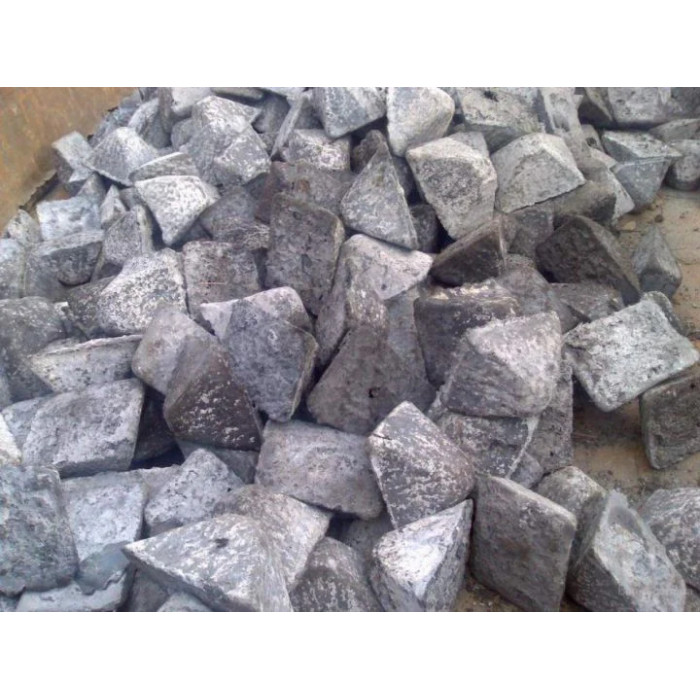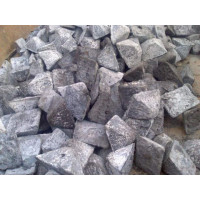Pig iron P2 is an alloy of iron with carbon (with a content of more than 2.14%). Carbon in cast iron can be contained in the form of cementite and graphite. Depending on the shape of graphite and the amount of cementite, there are: white, gray, malleable and high-strength cast irons. Cast irons contain permanent impurities (Si, Mn, S, P), and in some cases also alloying elements (Cr, Ni, V, Al, etc.). As a rule, cast iron is brittle.
Pig iron is one of the most common materials in metallurgy. It is an alloy of iron with a high carbon content, which is obtained by processing iron ore in coke ovens and then pouring it into molds for further use. Pig iron has a number of features that influenced its dominant position in mass engineering.
One of the features of cast iron is its high ductility, which makes it possible to obtain parts of various shapes from it - from molding elements to complex cast-iron structures for machine tools and machines. Another advantage of pig iron is its high heat resistance, due to which it is used in the production of parts for high temperature conditions, such as chimneys, furnaces, etc.
The use of pig iron can be found in almost all areas of production, where durable structures are required that are resistant to wear and high temperatures. These are engineering, automotive and railway industries, the production of fireplaces, stoves and many others. In this regard, the study of the features and applications of pig iron is an important task for metallurgists, engineers and production managers.
Pig iron is an alloy of iron with a high carbon content that goes through a double processing process: remelting and reworking. During the remelting process, cast iron is melted and cleaned of impurities, after which reworking is performed - processing of the alloy at a temperature of 900 to 1200 degrees, which includes homogenization, alignment of grain sizes and normalization.
Pig iron has a significantly lower content of impurities and microcracks than ordinary cast iron, and has a more uniform microstructure, which improves its mechanical properties and gives high resistance to deformation.
Application of pig iron:
1. Production of molds for casting metal parts;
2. Manufacture of wear-resistant rolled parts from pig iron of high strength;
3. Production of gear wheels of main gears in automotive and other technical applications;
4. Production of individual elements used in the process of casting metals: casting ladles, alloy ladles, etc.
Physical properties of pig iron
Density: Pitch iron has a very high density, averaging 7.2 g/cm³. Due to this, this material has good resistance to mechanical stress and is not subject to deformation under normal operating conditions.
Thermal conductivity: Pig iron is a good thermal conductor, able to store and retain heat. This property allows it to be used in the manufacture of boilers and other thermal devices, as well as in various devices that require high heat transfer.
Heat resistance: This type of cast iron can withstand high temperatures due to its composition and production process. This property allows it to be used in the manufacture of heat-resistant products such as heating elements, ovens and other similar devices.
Magnetic susceptibility: Pig iron is a magnetic material that can be used in the manufacture of magnetic systems, as well as in the manufacture of electrical devices.
Malleability: In the production of pig iron, special technologies are used to increase its malleability. This property makes it possible to manufacture complex parts and structures from it that can withstand significant loads.
Advantages of using pig iron in metallurgy
Pig iron is a material that has undergone additional processing and has an increased purity. It has a number of advantages over conventional cast iron, which makes it in demand in metallurgy. Let's consider the main ones:
Improved mechanical properties. Pig iron has increased strength and tear resistance, as well as better impact strength.
Better dimensional accuracy. Due to the increased purity of the material, pig iron has more accurate dimensions, which reduces the number of reworks.
Increased resistance to corrosion. The purity of the material increases its resistance to corrosion and oxidation, making it more durable.
Easier molding. Pig iron is more easily shaped due to improved processing methods.
All these advantages make pig iron an indispensable material in metallurgy, especially in the production of complex parts, where high quality and precision are required.
How pig iron is made
Cast ironand is produced by processing ordinary cast iron in converters or furnaces with forced oxygen purge. This makes it possible to reduce the content of carbon and other impurities in the metal, increase the content of silicon and manganese, and improve its mechanical and physical properties.
The process of production of pig iron takes several hours. During this time, oxygen is blown into the molten iron, which leads to its oxidation and the formation of a boiling slag. Thus, impurities are removed from the metal, which are released in the form of slag.
During the production process, pig iron can be additionally purified from sulfur and phosphorus. To do this, special ferroalloys can be added to the molten metal. In addition, it is possible to increase the carbon content in the metal by alloying it with coke blast-furnace iron.
The use of pig iron in metallurgy makes it possible to obtain a higher quality metal with improved properties. It is applied to the production of steel, iron castings, shafts, forged parts and more.
The use of pig iron in other industries
Pig iron is widely used not only in the metallurgical industry, but also in other areas of production.
Engineering. Pig iron is used for the manufacture of various elements and parts of machines, such as bodies, frames, bodies, shafts and others.
Construction. Pig iron can be used to create fasteners, pipelines, stairs, railings and fences.
Production of lighting fixtures. Pitch iron is used to make optical instruments such as photographic lenses and telescopes.
Manufacture of art products. Cast iron can be used to create sculptures, busts, fountains and other elements.
In each of these industries, pig iron is used due to its unique properties, such as high strength, wear resistance, corrosion resistance and others.
Conclusions on the use of pig iron in modern metallurgy
Pig iron is currently an important raw material for the metallurgical industry. It is used in the manufacture of various products, including pipes, machine parts, various fasteners, and more. In addition, pig iron can be used as an alloy to create steel castings and other materials.
The use of pig iron has a number of advantages. Firstly, it is a material with high strength and wear resistance. Secondly, it can be easily recycled and reused in production. This makes it cost effective. Thirdly, pig iron has a high thermal conductivity and thermal stability, which makes it an ideal material for use in modern metallurgy.
In addition, the use of pig iron can significantly increase the productivity of metallurgical processes. This is achieved due to its ability to quickly heat up and cool down, which speeds up the processing of materials. However, it should be taken into account that the use of pig iron may be associated with some technical difficulties in the process of its processing.
Thus, the use of pig iron in modern metallurgy has many advantages, and it continues to be an important raw material in the metallurgical industry. However, its use requires a special approach and compliance with certain technical requirements.
You can buy pig iron P2 from us at the best price in Ukraine. A wide range of products allows us to quickly and efficiently fulfill any order, helping to complete any construction work on time.
No questions about this product, be the first and ask your question.


